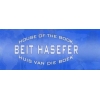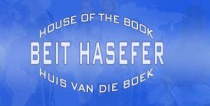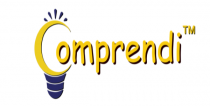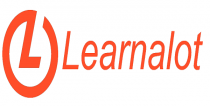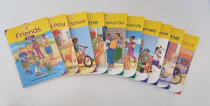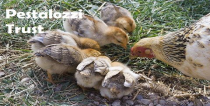Campaign against NCS in 2001
Analysis of NCS by Leendert van Oostrum, publish in June 2003. Recovered from Wayback Machine.
------------------------------------------------------------------------
Analysis of the proposed National Curriculum Statement
Conclusions of an Investigation
1. Introduction
This introduction is a rather personal one, because the experience of considering this curriculum document was not only professional. It affected my understanding of developments in South Africa in a decisive way.
I have never been, and neither am I now susceptible to conspiracy theories. I have always been sceptical of prophecies and dark forebodings circulated by anxious people associated with what I view as the lunatic, if rather harmless, fringe of the religious or conservative establishment. I never paid them much attention. On the whole, I viewed these as phenomena related largely to American political conflicts, which have been “contaminating” our South African attempts to establish a democratic society.
When I commenced reading the proposed curriculum, I was quite pleased on the whole. At last someone is taking the bull by the horns, I thought, and doing something about the abysmal conditions in our schools. I felt grateful to the minister of education for showing the necessary resolve to turn things around.
My first twinge of doubt occurred at about this time – when I was reading the “Overview” to the curriculum. As I read, I remembered a few things. I remembered that it was the immediate predecessor of our minister of education who had fired hundreds of thousands of teachers, and had closed hundreds of teacher training colleges as soon as our present government came to power. It was he who had simply stopped ordering school supplies, and text books in particular, causing havoc in schools and causing long established publishing companies to close or merge. It was he who had caused plunging pass marks, and it was out present minister who described the results as a “national crisis”.
So, I thought, really it is just the same government cleaning up a mess created by themselves. No need to feel especially grateful, then.
As I scanned the documents relating to the learning areas of “Life Orientation” and “Social Sciences”, however, I became progressively more concerned. This was like no curriculum I had ever read. There was something seriously wrong with these proposals. For one thing, the logic of the document is unbelievably complicated. It was almost impossible to follow any train of argument. Also, there is a serious dissonance: On the one hand, the document proclaims “human rights”, “social justice” and similar concepts with a mantra-like monotony. But there is a callousness – even brutality – about the language that made me very uneasy.
I had already spent many days reading and rereading the material when I remembered something else – a conference in 1992. One of the speakers was the late Professor Harold Wolpe. He had been a “listed Communist” in the 1950’s, and was accused in the Rivonia Trials. He escaped into exile and was now, after three decades, back in South Africa.
Professor Wolpe lectured on the transformation of the education system. At one point he made a statement that I noted, but which was mysteriously omitted from the text of his lecture that was later published: He made the classic revolutionary conclusion that all existing structures had to be destroyed before the new society could be established.
The memory of Professor Wolpe’s statement in 1992 brought a new perspective. There was new meaning to the “incompetence” of Dr Bengu, whose destruction of education had been labelled by the liberal journalist Alister Sparks a crime against humanity as bad as apartheid education.
I also realised that, in the pages of the new curriculum, I was looking at the face of the new society that is to be built on the crime racked ruins of the old. And it was the face of a society where violence and crime could form legitimate instruments of government policy. Where ethics and morality themselves become suborned to political expediency.
This was when I commenced studying the material with concentration. And what unfolded in the pages was worse than I could imagine.
2. The foundation
The justification for the particulars of this curriculum is built on pylons buried deep in various sections of the documents. Some of them sit in the “Manifesto”, others in the “Overview”, many in the “focus”, “values” outcomes and assessment standards for the various grades – particularly in the learning areas for Social Sciences and Life Orientation. It is designed as follows:
Almost every task that learners perform must, explicitly or implicitly, be performed according the “the values of the constitution” as interpreted by the drafters of the curriculum on the one hand, and by the teacher, assessor and moderator on the other hand.
Every assessment task must be assessed according to the stated outcomes, knowledge skills and values prescribed. It is specifically stated, however, that this assessment is subject to the vision of the kind of learner that the drafters of the curriculum wish to “produce”. This vision, likewise, is determined by “the values of the constitution”.
Accordingly, “the values of the constitution” (sometimes augmented with “and human rights” or “and social justice”) are established as the central ethic to be taught and lived in the entire education system, including private schools and home education.
However: the values of the constitution form a very extensive subject, full of “ifs” and “buts”, nuances and subtleties. That is why the Constitutional Court exists – to ensure that the values of the constitution are manifested in our law. It is not possible for one big conference on “Values in Education” to establish the canon on the values in education.
On the contrary, such a conference, such as the “Saamtrek” conference of 2001, could easily manipulate “the values of the constitution” to achieve its own aims. By selection and subjectivity, such a conference could establish a very specific view of what “the values of the constitution” might be.
“But”, one might argue: “Such a conference, if democratically composed and conducted, is a legitimate reflection of what our society considers to be the values of the constitution”.
This argument is false. The function of the Bill of Rights, in a democratic society, is precisely to protect the individual against the coercion of the collective. If the decisions of such a conference are enforced with the power of the state, they become an assault on the constitution itself. That is the case in this instance.
The “Manifesto” emanating from that conference itself states, “values cannot be legislated”. It is, indeed, one of the central values of the constitution that values shall not be legislated. This is the core of the freedom of conscience.
There is a very good reason why this should be so. In an open democratic society, law controls only the actions of individuals – not their values, convictions, or thoughts. In an open democratic society, actions can be punished, but thoughts must not.
Historically, attempts to control the thoughts and values of individuals have consistently lead to atrocities such as those associated with the Spanish Inquisition, Stalinist Russia and the Cultural Revolution in China.
This curriculum, however, uses the full force of the law to compel children to adopt, proclaim and confess a very specific and selective view of “the values of the constitution” as a central ethic. By means of the laws and regulations on compulsory school attendance, qualifications, and examinations, this ethic becomes compulsory.
This curriculum is nothing less than values legislated.
3. The machinery of coercion
Composition. The present document consists of ten booklets, running to a total of nearly 1400 pages. There is an Overview, a Qualifications Framework describing the assessment system, and the Learning Areas. Each of the eight learning areas is described in its own booklet. These run to around one hundred to two hundred pages each. Each of the booklets on the learning areas comprises, besides the description of the learning area itself, a summary of the overview and the assessment requirements.
Destructured organisation. The content of the eight learning areas is highly intertwined. For example: Issues treated under the learning area for “Social Sciences” or “Life Orientation” are reflected in each of the other learning areas, such as “Economic and Management Sciences” and “Natural Sciences”. This reflects to some extent the indivisible nature of the world. However, it also makes it very difficult for a reader to confirm that any particular aspect of the curriculum is adequately covered.
In the absence of a systematic analysis of the needs on which the curriculum attempts to address, the destructured character of the document makes it easy to hide, and difficult and time consuming to discover, bias and prejudice in the curriculum.
A filter of “values”. The operative mechanism lies in the specifications for knowledge, skills, and values in each learning area. Each learning area description provides, for each grade, a “focus”, and a section on “values and approach”. The “focus” specifies the factual content to be mastered, while the “values and approach” prescribes the manner in which the factual focus must be approached.
Typically, for example, learners are required to address “human rights” at various levels, suggesting a deductive consideration of the range and scope of each right. However, the “values and approach” forces a consideration from an almost exclusively inductive angle. Learners are to be exposed to human rights almost entirely from the perspective of human rights abuses or perceived abuses in the form of “inequalities”.
This mechanism pervades the entire curriculum, and functions as a highly selective filter through which a very specific agenda is projected. The broad scope of the values is narrowed to a gaunt and rigid political correctness.
The hidden curriculum. The most powerful thrust of this curriculum is hidden. It is hidden in numerous small ways, including the use of politically loaded terminology as if it were well-defined professional terms. The most important mechanism, however, is outright duplicity.
Sun Tsu, a Chinese military and political strategist from the 4th century BC advocated deception, duplicity and calculated piety as strategies of government. His ideas have been influential on modern military and political strategists, particularly in revolutionary China and the former USSR. The elements of calculated piety, deception and duplicity are the hallmark of the proposed National Curriculum in a manner that makes it a case study in Machiavellian tactics.
The major manifestation of deception is observed in the “Manifesto on Values, Education and Democracy” that serves as the motivating source for the curriculum in the absence of a systematic needs analysis. The Manifesto, in a style reminiscent of religious proselytism, expounds on the lofty aims of the curriculum with mystic fervour. The curriculum, in contrast, filtering layer upon layer of content, “focus”-ed through lenses of “values”, reveals a fist of steel.
It is a totalitarianism that encourages “criticism” but brooks no dissent. It is one that basks itself in the shining light of “human rights” and “social justice” but crushes the individual under the weight of the collective. It is one that “celebrates diversity” in order to destroy every vestige of diversity by state mandated homogenisation. It is a totalitarianism that conscripts children to forty hours of state directed psychological encoding and political indoctrination every week. It is one that conscripts children to compulsory “voluntary” community service and to compulsory attendance at designated “national” and “nation building” events as specified in numerous outcomes.
Demonisation. This curriculum consistently lauds “critical” and “independent” thinking. Yet, in numerous value statements and assessment standards, it explicitly and implicitly promotes the demonisation of dissent and of minority positions. Children are explicitly required to adopt values from other cultures along the way towards a homogenized society.
The sting in the tail - assessment. The steel fist of totalitarianism closes on the child when assessment comes. The system of assessment is designed to ensure children confess to state approved values and attitudes if they hope to receive any qualification at all. The system presents the following salient features:
- It is morally and psychologically invasive. The system requires children from the age of six to fifteen to reveal their private opinions on matters of major political and social contention. It goes further than that: In order to receive a qualification, children have to submit to psychological manipulation of their individual and social identity, they are subjected to procedures designed to diffuse the individual, cultural and religious identity, and they must proclaim the state approved value system.
- It is personally invasive. The system relies on constant observation and recording. In practice, there is no time at all that the child is not subject to scrutiny and judgement. The surveillance extends even to the child’s leisure time, personal relationships, private decisions and family.
- It is subjective and cannot be challenged. Every assessment task that children are subjected to is judged in terms of a set of stated and unstated values as well as a highly abstract “vision” of the kind of person the child must be in order to be acceptable for the proposed society. The nature of these values and vision is so complex and ill defined that it will be almost impossible for a child to appeal an unfavourable decision by an examiner or moderator.
4. Conclusion
This curriculum, in the context of the raft of laws, regulations and policies on which it floats, is designed to create a totalitarian society.
The marketing glossies produced by the education department proclaim that the curriculum serves the “values of the constitution and human rights”, and they promise (in the dulcet tones of the English grammar school) a “liberal education”. The eyes of the reader are drawn to our constitutional values of human dignity, equality before the law and individual freedom.
The product in the colourful box, however, looks distressingly different. The “values of the constitution” are found to be a highly selective subset of the constitutional values, carefully screened by a totalitarian mind and augmented by notions directly opposed to the constitution.
In all the flowery language, there is no respect. No respect for the child as a human being. No respect for the child as a person with his or her own destiny. No respect for the family who brought forth the child and who have the legal responsibility to guide and direct the child to productive adulthood.
Contrary to its incessant claims, what is absent from the document is any recognition of human dignity.
The child features in these proposals only as a “resource” – raw material to be processed and made into a predetermined pattern.
Eugene Marais described the kind of individual and the kind of society at which this curriculum aims, in the previous century. The individual to be “produced” (in the terminology of the curriculum) is an individual in the sense that a white ant in a colony of ants is an “individual”. Marais argues, in The Soul of the White Ant that a colony of ants are really one organism with one “soul”. The individual has no meaning except in the collective.
It is in this sense that the “Manifesto” sings the praises of “submission to the ensemble”. It is a vision of human society that appears in Plato’s oppressive Republic, in the world of BF Skinner and in Castro’s Cuba.
The proposed National Curriculum Statement is an assault on the Constitution and on democracy itself.
The “values” of this curriculum stand to the notion of “education” as the memory of Dr Mengele stands to the notion of “healing”.
Legal & Research
Centres
Homeschool ABC
Support
Curriculums
Has no content to show!












